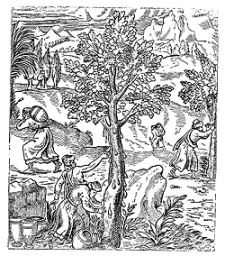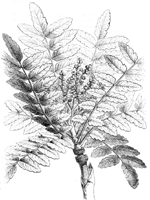





Follow this link for Research Group Home Page.
 |
|||||||||||||||||||||||
| Frankincense is obtained from the trees of the genus Boswellia of which there are four main species B. carteri, B. sacra, B. frereana and B. serrata which grow in hot and arid conditions from east Africa through southern Arabia and into north-western India. The trunks of the trees exude a sticky substance called oleo gum resin, which is obtained by making deep incisions in to the bark. After drying in the hot desert sun the hardened, pale yellow "tear" shaped resin is collected. Essential oils of frankincense can be obtained by either steam distilling or solvent extracting the crude resin obtained from the trees. Frankincense resin consists mainly of boswellic acid and alibanoresin. |
|||||||||||||||||||||||
 |
 |
||||||||||||||||||||||
| An arabian vendor. |
|||||||||||||||||||||||
| The 2,000-foot Jebel Mahrat escarpment blocks the monsoon rains, creating a microclimate where frankincense trees grow. |
|||||||||||||||||||||||
 |
|||||||||||||||||||||||
 |
|||||||||||||||||||||||
| Harvesting resin. |
|||||||||||||||||||||||
| A Boswellia leaf. |
|||||||||||||||||||||||
 |
This page was created by Gordon Docherty a PhD student working for Dr Richard Evershed in the Organic and Biological section of the Bristol university school of chemistry. Follow this link for Research Group Home Page. |
||||||||||||||||||||||